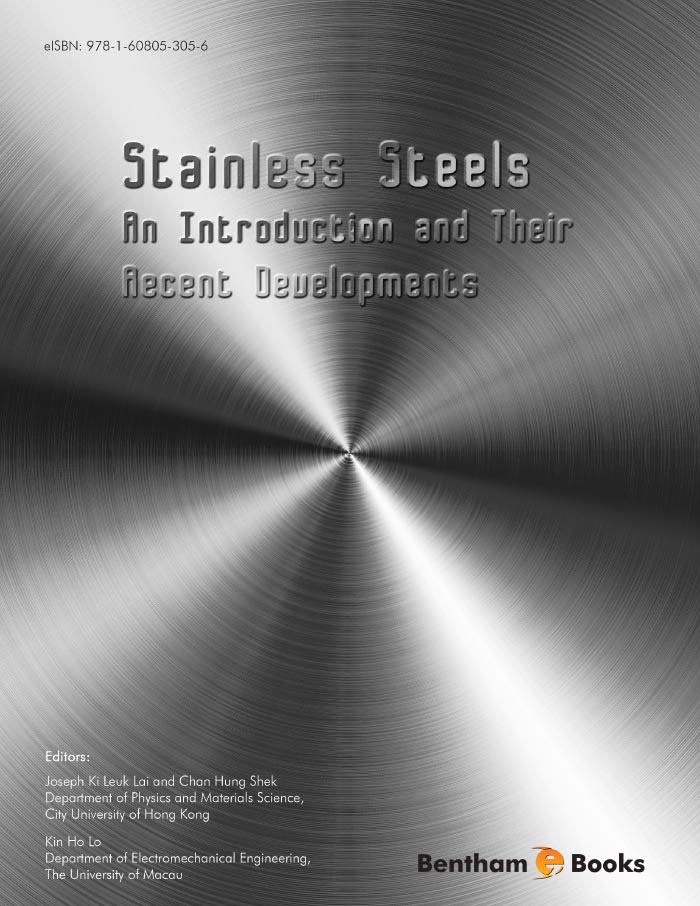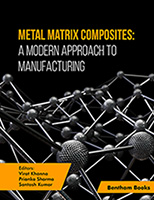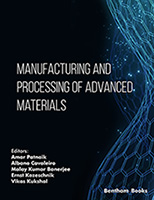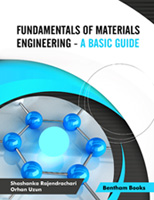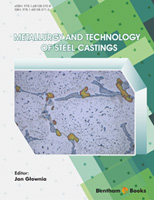The discovery of stainless steels is generally thought to originate in Europe about a century ago, although many people find this claim debatable. Even within Europe, there is controversy over the ‘birthplace’ of stainless steel. While there is debate on who should be credited with the discovery of stainlessness, it is incontrovertible that stainless steels have contributed significantly to the wellbeing of humanity. The use of stainless steels ranges from low-end products such as water buckets to very high-end ones, such as the spacecraft propellers and casings. It is no exaggeration that stainless steels are omnipresent in our daily lives. Although stainless steels are such time-honoured materials, there is still a lot of room for improvement. Research and development of these materials are actively pursued at various institutions worldwide. A search with the keywords ‘stainless steel’ in popular databases such as Science Citation Index-Expanded or Scorpus would reveal thousands of recent publications. This is a vividly testimony to the perennial interest on stainless steels as a key research topic by various research in the world.
Many excellent monographs on stainless steels have been published over the years. The epitomes are An Introduction to Stainless steels by Lula and the Handbook of Stainless steels by Peckner and Bernstein. These classic texts give overviews on the various classes of stainless steels and were published in the 1970’s and 1980’s, respectively. Since then, many exciting developments on stainless steels have been made. These include advances in the fabrication of ultra-high nitrogen stainless steel, the discovery of new phases, techniques for refining grain sizes down to the nanometre scale, to name just a few. Phenomena that were not adequately explicated in the 1980’s, such as hydrogen-enhanced localised plasticity (HELP), have been satisfactorily explained recently. In addition, stainless steels have been employed in many new and novel applications that were unheard of when these early texts were published. Examples of these applications are the use of stainless steels for temperature sensing, signature authentication, and targeted drug delivery.
Besides the afore-mentioned novel applications, the interest in employing stainless steels in many conventional applications has been rekindled lately. The construction industry is an illustrative example. Although it was long ago when stainless steels was suggested for use as concrete reinforcing bars, ordinary carbon steel still dominate because of their lower initial costs. However, it has been conclusively proved in several recent cost-cycle analyses that stainless steels are more economical than carbon steel in the long run. Nevertheless, the widespread use of stainless steels as concrete reinforcing bars is still hindered by the relative lack of knowledge and experience of these materials for this application. In 2006, an extensive study was undertaken by researchers in the Nordic Innovation Centre in Norway with the aim to ‘overcome the knowledge gap for application of stainless steels reinforcements in concrete structures’. This study stressed that although stainless steels belonged to the class of traditional materials, there were still many ‘knowledge gaps’ that needed to be bridged.
Surprisingly, there are few monographs reporting recent developments on stainless steels in the past 15 years. Texts such as V. G. Gavriljuk’s High Nitrogen Steel and Mudali and Raj’s High Nitrogen Steel and Stainless steels are recent examples. Nevertheless, these recent monographs were specifically devoted to the high nitrogen varieties, and as a consequence the numerous new discoveries and developments in the various classes of conventional stainless steels were not included.
This book is intended to fill this gap and report the latest developments on stainless steels since the publications of the above-mentioned texts. Discoveries and developments in various aspects of stainless steels within the past 15 years are introduced. Besides recent developments, the historical backgrounds of some of the topics covered in this book are included (e.g. the timeline of developments made on 475°C embrittlement). The book is divided into two parts: the first part gives an overview of the many classes of stainless steel, while the second part describes recent innovations and novel applications. Chapters 7, 8, 9 and 11 draw heavily from our review paper in Materials Science and Engineering R Reports (Vol.65 (3-4), 2009, pp.39-104). We are grateful to Elsevier for granting us the permission for adopting some of the contents of the paper for use in this book.
The Chief Editor (J. K. L. Lai) set the tone for this book and the Associate Editor K. H. Lo acted as the lead author for most of the chapters. During the writing of the first part of this book, the authors made very frequent references to the time-honoured, outstanding handbook on stainless steels by Peckner and Bernstein (Handbook of Stainless Steel. Peckner D and Bernstein IM (Eds). McGraw-Hill New York 1977). We therefore would like to express our heartfelt gratitude to the authors and editors of this handbook for producing such an exceptional reference on stainless steel. We also would like to thank the authors of the references that we have quoted in this book. We sincerely hope that those colleagues whose works we have cited and quoted in this book will point out to us any misquotations and misinterpretations, such that we can make corrections for the future editions of this book. Wherever possible, we have tried to acknowledge the contributors whose results we have quoted. However, due to the sheer amount of publications that we have referenced, we are afraid that we might have inadvertently failed to acknowledge some of our colleagues. We will be very appreciative if they can inform us of any such missing acknowledgements, so that we can credit them with their efforts in the future editions.
The editors are greatly indebted to Prof. Brian Ralph for his invaluable comments on the text. The Editors are also indebted to the many anonymous reviewers of our book manuscripts. The Editors would like to record a special thank you to Salma Safaraz, our main contact in Bentham. Without the assistance of Salma, the production of this book would not have been so smooth. Last but not the least, the Editors would like to acknowledge the supports they received from City University of Hong Kong and the University of Macau.
Joseph Ki Leuk Lai
City University of Hong Kong
Kin Ho Lo
The University of Macau
Chan Hung Shek
City University of Hong Kong

